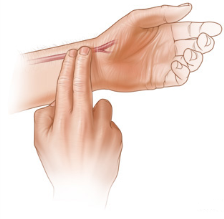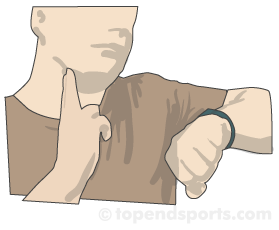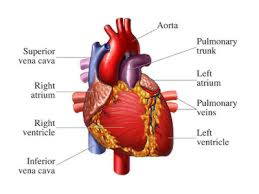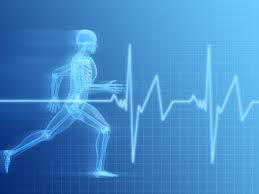- Учителю
- Практическая работа (8 класс)
Практическая работа (8 класс)


Зертханалық жұмыс № 7
Тақырыбы: " Дене жаттығуларының жүрек жұмысына әсері "
-
Жұмыс мақсаты
____________________________________________________________________________________________________________________________________________
-
Болжам
-
Тәуелсіз айнымалы
Тәуелді айнымалы
Бақыланатын айнымалы
-
Материалдар мен жабдықтар
(тіке/таңбаланған тізімде аталған)
-
Жұмыс барысы
Жұмысты екі оқушы орындайды.Жұмыс мынадай кезеңдерден тұрады- орындықта тыныш отырған кезде, орнынан тік түргелген кезде және 10 рет отырып, тұрғаннан кейін жүректің ырғағын бақылайды.
-
Орындықта тыныш отырған кезде білезіктегі қылтамырдың 1 минутта соғуын екінші оқушы саусақпен басып санайды. Оны дәптерге жазады.
-
Бірінші оқушы жайлап орнынан тұрысымен екінші оқушы тамырдың соғуын санайды.
-
Бірінші оқушы тік түрегелісімен екінші оқушы оның тамырдың соғуын санайды.
-
Бірінші оқушы екі қолын алдына созып, 15 секундта 10 рет отырып, тұрады. Одан соң ол тез орындыққа отырысымен екінші оқуышы оның тамырының соғуын санайды. Алған мәліметтерді дәптерге жазып отырады. Барлық сандарды салыстырып, айырмашылығын тауып, талдап, қорытындылайды. Қандай жағдайда жүрек жылдамдығы жоғарлайтынын және оның себебін ғылыми тұрғыдан қорытындылаңдар.
Қорытынды:
I Өз бақылауларыңды талда, бағала. Қорытынды шығар!
Тамырдың 1 минуттағы соғу саны
Тыныштық күйде
Қозғалыс кезінде
Отырған кезде
Жай орнынан тұрған кезде
Тік түргелген кезде
15 секундта 10 рет отырып, тұрғанда
Exercise and heart rate
Background
Heart rate is a term used to describe the frequency of the cardiac cycle. Usually, heart rate is
calculated as the number of contractions (beats) of the heart in one minute. Therefore, heart rate is usually expressed as beats per minute (bpm). When resting, the typical adult human heartbeats at about 70 bpm in males and 75 bpm in females, although this rate varies among people. The pulse is one way of measuring heart rate.
The body increases heart rate in response to a wide variety of conditions in order to increase the cardiac output (the amount of blood ejected by the heart per unit time). Exercise causes a
person's heart rate to increase above the resting heart rate. As the physical activity becomes
more vigorous, the heart rate continues to increase. With sufficiently vigorous exercise, the heart rate reaches its maximum rate.
The reference range for resting heart rate is between 60 bpm and 100 bpm. Less than 60 bpm is
termed bradycardia. Greater than 100 bpm is termed tachycardia.
Estimated Maximum Heart Rate
You can apply a mathematical formula, based on your age, to estimate your maximum heart
rate, as follows:
220 - age = estimated maximum heart rate.
Target Heart Rate Range
Target heart rate range (also known as training heart rate range or exercise heart rate range) is
the range of heart rates reached during aerobic exercise that enables one's heart and lungs to
receive the most benefit from a workout. The most common method for calculating the target
heart rate range is by multiplying the estimated maximum heart rate times the percent intensity that produces maximum cardiovascular benefits, generally considered to be a range of
50% to 85% intensity.
 The following example assumes a maximum heart rate of 180:
The following example assumes a maximum heart rate of 180:
50% intensity: 180 x 0.50 = 90 beats per minute
85% intensity: 180 x 0.85 = 153 beats per minute
Method:
-
The student should place the heart rate sensor over their heart and record their heart rate at rest using the SPARK.
-
The student should then run on the spot for 60 second and then record their heart rate using the SPARK.
Table of results for heart rate
Beat per minute (bpm)
Heart rate at rest
Heart rate after exercise
-
What is the average heart rate for an adult?
-
How will heart rate change with exercise?
-
What is the name of the blood vessel which carries blood vessel to the heart?
-
What is the name of the blood vessel which carries blood from the heart?
-
Why does the heart rate increase with exercise?
